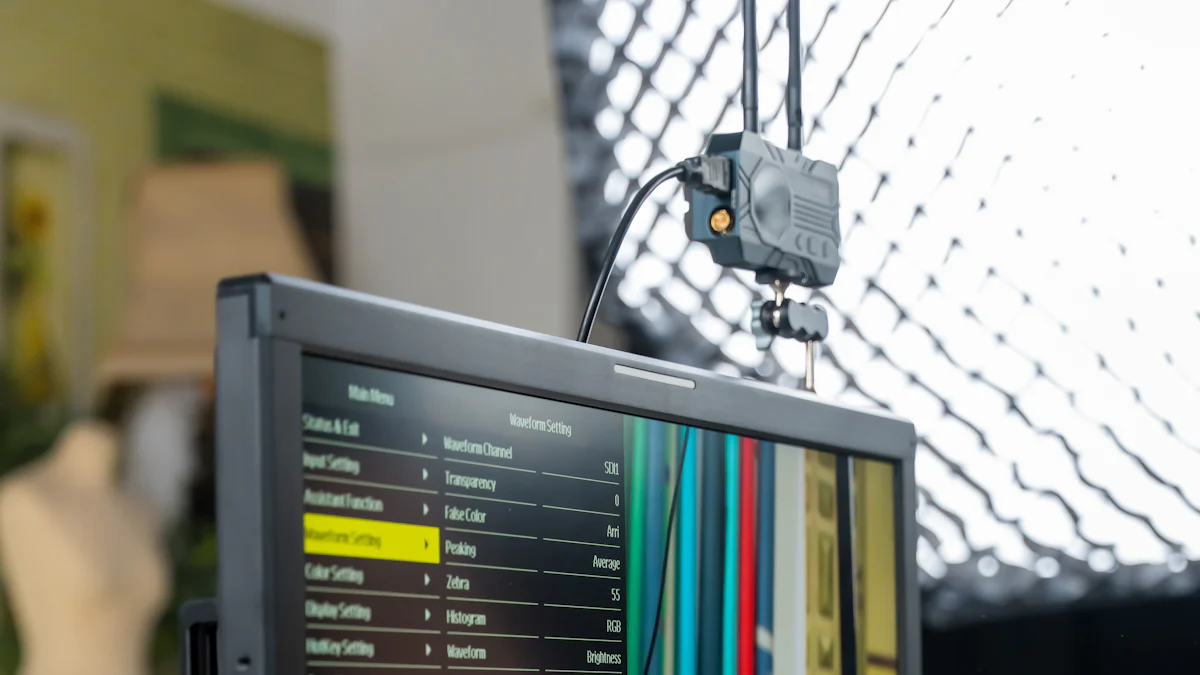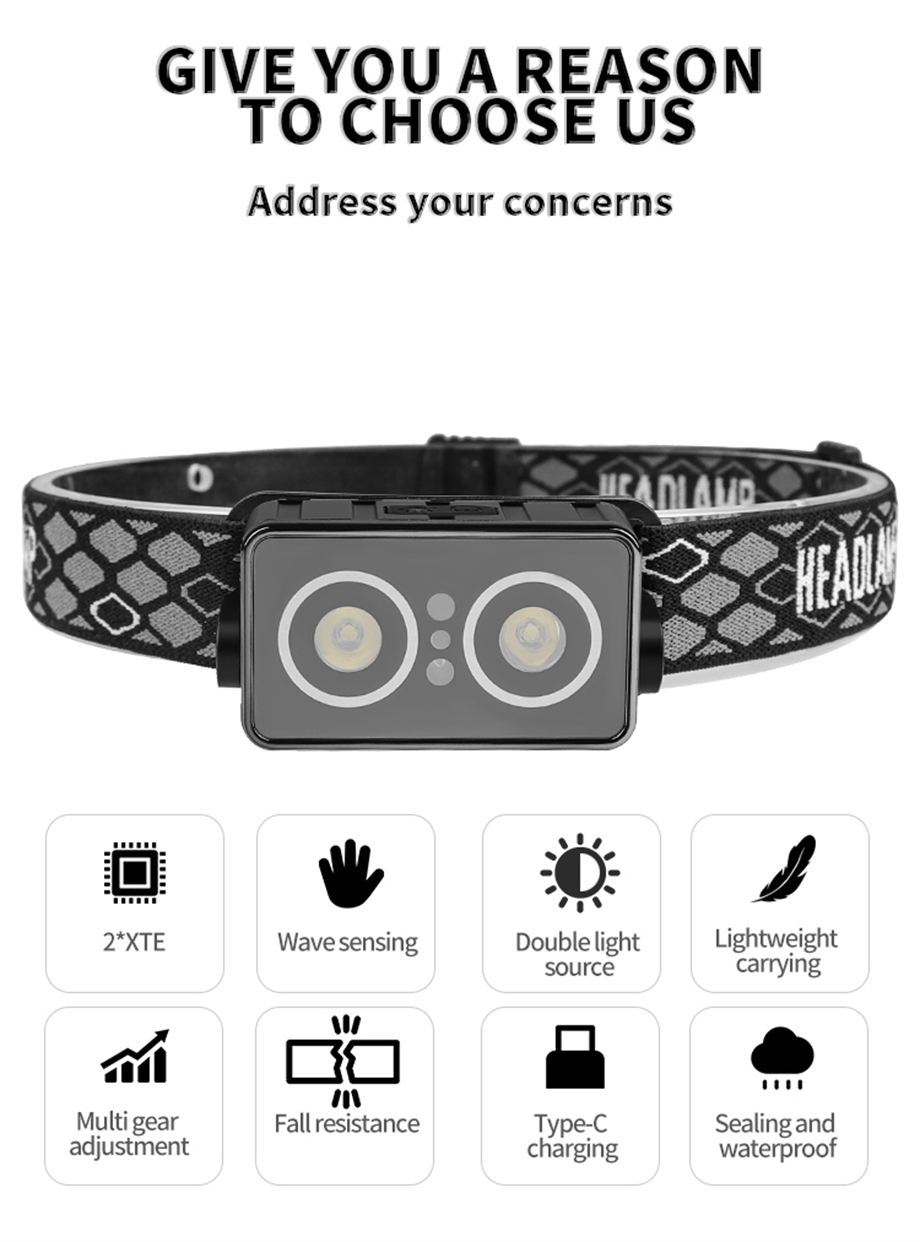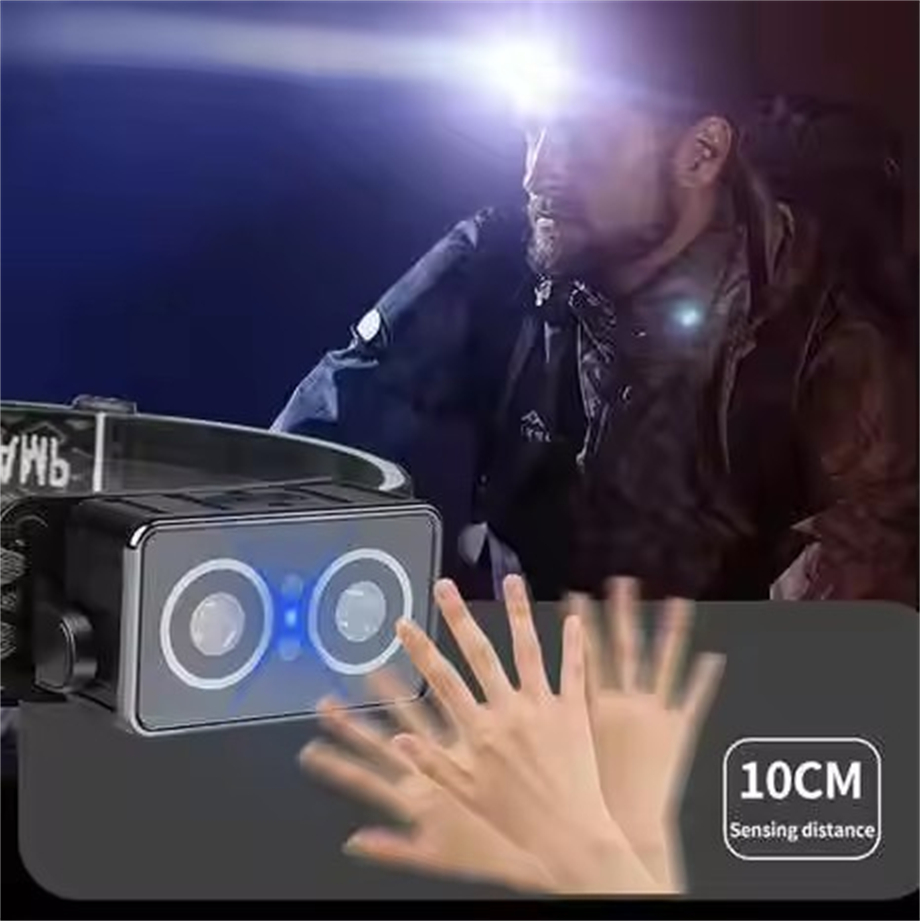How to Select Adjustable Brightness Levels for Different Industries

Adjustable brightness levels play a critical role in ensuring optimal performance across industries. You need to consider how brightness impacts productivity, safety, and comfort in different settings. For example, offices require lighting that reduces eye strain, while outdoor advertising demands high visibility under sunlight. Environmental factors like ambient light and temperature also affect brightness needs. By understanding these variables, you can make informed decisions. Learning how to select adjustable brightness levels for different industries helps you create environments that enhance functionality and user experience.
Key Takeaways
Adjustable brightness helps people work better and feel comfortable. Change lighting to avoid eye strain and stay focused.
In stores, use bright lights when it's busy to attract shoppers. Dimmer lights during quiet times make the space feel cozy.
Hospitals need adjustable lights for patient comfort and accurate procedures. Good lighting lowers stress and keeps everyone safe.
Outdoor signs need bright lights to be seen in sunlight. Pick screens that work well in bright outdoor conditions.
Think about sunlight and other light around when setting brightness. Use sensors to change brightness automatically for clear visibility.
Understanding Brightness Levels
What is Brightness?
Definition and Measurement
Brightness refers to the amount of light emitted or reflected by a surface. It determines how visible and clear objects appear in different environments. Several units measure brightness:
Candela (cd): Measures the luminous intensity of a light source in a specific direction.
Lumen (lm): Describes the total amount of light emitted by a source.
Illuminance: Indicates the density of light striking a surface, measured in lux (lx) or footcandles (fc).
Luminance: Represents the intensity of light emitted in a particular direction.
These measurements help you evaluate the brightness of an LED screen and ensure it meets your specific needs.
Importance of Brightness in Visual Clarity and Functionality
Brightness plays a key role in how well you perceive content on a screen. Insufficient brightness can make text or images hard to read, while excessive brightness may cause glare and discomfort. For example, the brightness of an LED screen in an office should reduce eye strain, while outdoor displays need higher brightness to remain visible in sunlight. Proper brightness ensures functionality and enhances the user experience.
Why Adjustable Brightness Matters
Benefits of Customization for Different Environments
Adjustable brightness levels allow you to adapt screens to various lighting conditions. This customization improves visibility, reduces energy consumption, and extends the lifespan of the screen. For instance, dimming a screen in low-light settings prevents unnecessary power usage and creates a comfortable viewing experience.
Role of LED Screens in Achieving Adjustable Brightness
LED screens excel at providing adjustable brightness. They use optical sensors to detect ambient light and adjust brightness automatically. This technology ensures content remains visible without causing eye strain. Additionally, it optimizes energy efficiency by leveraging natural light. By managing brightness effectively, LED screens also prevent wear and tear, prolonging their durability. Whether you’re using a screen indoors or outdoors, LEDs offer the flexibility to meet your specific requirements.
How to Select Adjustable Brightness Levels for Different Industries

Indoor Environments
Offices: Eye Comfort and Productivity
In office environments, proper lighting is essential for maintaining productivity and focus. Adjustable brightness levels help you create a workspace that reduces eye strain and improves comfort. Natural light plays a significant role in this setting. It minimizes symptoms like blurred vision and headaches, which can hinder performance. You should also consider how natural light interacts with artificial lighting. Optimized windows can help manage glare while maintaining a consistent temperature. By balancing these factors, you can enhance employee well-being and efficiency.
Retail Stores: Product Visibility and Ambiance
Adjustable brightness in retail stores improves both product visibility and ambiance. Brighter lighting during peak hours highlights products, making them more appealing to customers. Softer lighting during quieter times creates a relaxed shopping atmosphere. This flexibility enhances customer engagement and encourages longer visits. By tailoring brightness levels to the time of day or special events, you can create interactive digital experiences that leave a lasting impression.
Healthcare Facilities: Patient Comfort and Precision
In healthcare settings, lighting directly impacts patient comfort and medical accuracy. Adjustable brightness ensures a calming environment for patients, reducing anxiety. Proper illumination also supports precision during medical procedures. It minimizes glare and enhances safety for both patients and staff. By prioritizing these factors, you can create a space that promotes healing and efficiency.
Outdoor Applications
Advertising: High Brightness for Visibility in Sunlight
Outdoor advertising requires high brightness displays to remain visible under direct sunlight. Challenges like high ambient light and reduced contrast can make content unreadable. Increasing brightness levels addresses these issues but may lead to higher energy consumption. High brightness outdoor displays balance visibility and sustainability, ensuring your advertisements stand out in high traffic areas.
Transportation: Safety and Readability in Varying Conditions
Transportation hubs rely on outdoor touchscreen displays for clear communication. Adjustable brightness ensures readability in diverse lighting conditions, from dimly lit terminals to bright daylight. This adaptability improves safety and customer engagement by providing accurate, visible information at all times.
Construction: Durability and Visibility in Harsh Environments
Construction sites demand durable outdoor displays that can withstand harsh conditions. High brightness outdoor displays ensure visibility despite dust, rain, or direct sunlight. These displays enhance safety by providing clear instructions and warnings, even in challenging environments.
Specialized Industries
Manufacturing: Precision and Safety in Production Lines
In manufacturing, adjustable brightness supports precision and safety. Proper lighting enhances visibility on production lines, reducing errors and accidents. By tailoring brightness to specific tasks, you can improve efficiency and maintain a safe working environment.
Medical: Brightness for Surgical and Diagnostic Accuracy
Medical settings require precise brightness levels for critical tasks. Diagnostic monitors typically need luminance between 500 and 1000 cd/m², while surgical monitors require 800 to 1200 cd/m². These levels ensure accurate imaging and support life-saving procedures. Adjustable brightness allows you to meet these exacting standards.
Military: Adaptability for Diverse Operational Scenarios
Military operations often occur in unpredictable environments. Adjustable brightness provides the adaptability needed for diverse scenarios, from low-light conditions to bright daylight. This flexibility ensures functionality and safety, even in the most demanding situations.
Factors to Consider When Selecting Brightness Levels
Environmental Conditions
Impact of sunlight, temperature, and humidity
Environmental factors like sunlight, temperature, and humidity significantly influence the performance of LED displays. Sunlight can reduce visibility by creating glare or washing out the screen. High temperatures may cause overheating, affecting the display's durability. Humidity can lead to condensation, which may damage internal components. You should select displays designed to withstand these conditions. For outdoor applications, opt for weather-resistant screens with high brightness to ensure visibility and longevity.
Adjusting brightness for indoor vs. outdoor settings
Indoor and outdoor environments require different brightness adjustments. Indoor settings, such as offices or retail stores, benefit from moderate brightness levels that reduce eye strain. Outdoor displays need a higher brightness range to combat sunlight and maintain visibility. For example, an outdoor billboard must deliver high visibility even from a distance, while an indoor commercial display should focus on readability and clarity. Choosing suitable brightness ensures optimal performance in any environment.
Application-Specific Needs
Readability and visibility in different lighting conditions
Different applications demand specific brightness adjustments for readability and visibility. Strong lighting conditions, like direct sunlight, require increased brightness to maintain visibility. Conversely, dim environments need lower brightness to avoid glare. The table below highlights the requirements for various scenarios:
Application Scenario | Visibility Requirement | Readability Requirement |
|---|---|---|
Outdoor Billboards | High visibility for long-distance identification | N/A |
Commercial Displays | N/A | Higher readability for clarity and attractiveness |
Emergency Notification Systems | N/A | Highly readable for quick understanding in emergencies |
In emergencies, LED displays must convey critical information quickly. High readability ensures messages are understood immediately, which is vital for public safety.
Energy efficiency and cost considerations
Energy efficiency is another critical factor when selecting appropriate brightness. Overly bright displays consume more power, increasing operational costs. Adjustable brightness technology helps optimize energy use by adapting to ambient light. This not only reduces costs but also extends the lifespan of the display. By selecting suitable brightness levels, you can balance performance and energy savings effectively.
User Experience and Safety
Avoiding glare and eye strain
Excessive brightness can cause glare, leading to discomfort and eye strain. This negatively impacts the user experience, especially in environments like offices or healthcare facilities. You should aim for appropriate brightness levels that enhance comfort without compromising visibility. Anti-glare coatings and adjustable brightness features can further improve usability.
Ensuring safety in critical applications
In critical applications, such as transportation or emergency systems, brightness directly impacts safety. Displays must remain visible and readable in all conditions to provide accurate information. For instance, transportation hubs rely on clear signage to guide passengers safely. Selecting suitable brightness ensures these systems function reliably, enhancing both safety and user experience.
Adjustable Brightness Technology in LED Screens

How Adjustable Brightness Works
Overview of sensors and control systems
Adjustable brightness in LED screens relies on advanced sensors and control systems. These sensors detect ambient light levels in the environment. They then send this data to the control system, which adjusts the screen's brightness accordingly. For example, in a dim room, the system reduces brightness to prevent glare. In bright sunlight, it increases brightness for better visibility. This process happens automatically, ensuring the screen adapts to changing conditions without manual intervention.
Control systems also allow you to customize brightness settings. You can program specific levels for different times of the day or unique tasks. This flexibility ensures the LED screen meets your exact needs, whether indoors or outdoors.
Examples of technologies used in brightness adjustment
Several technologies make brightness adjustment possible. Light sensors, such as photodiodes, measure the intensity of surrounding light. These sensors are highly sensitive and provide accurate readings. Pulse-width modulation (PWM) is another key technology. It controls the brightness of LED screens by adjusting the power supplied to the LEDs.
Some LED screens also use adaptive brightness algorithms. These algorithms analyze data from sensors and adjust brightness dynamically. For instance, they can dim the screen during nighttime to save energy. These technologies work together to deliver a seamless viewing experience.
Benefits of Adjustable Brightness
Energy savings and cost efficiency
Adjustable brightness helps you save energy. By reducing brightness in low-light conditions, LED screens consume less power. This not only lowers electricity bills but also extends the lifespan of the screen. Over time, these savings add up, making adjustable brightness a cost-effective solution.
Enhanced adaptability for changing environments
LED screens with adjustable brightness excel in diverse environments. They adapt to varying light conditions, ensuring consistent visibility. Whether you’re using a screen in a sunny outdoor space or a dim indoor setting, adjustable brightness ensures optimal performance. This adaptability enhances user experience and makes LED screens suitable for a wide range of applications.
Common Mistakes to Avoid
Over-Brightness
Negative effects on energy consumption and user comfort
Using excessive brightness can lead to several issues. Overly bright displays consume more energy, which increases operational costs. This can also shorten the lifespan of your LED screens due to unnecessary strain on the components. Beyond energy concerns, over-brightness negatively impacts user comfort. It can cause glare, making it difficult for users to focus on the screen. Prolonged exposure to bright displays may result in eye strain, headaches, or even long-term vision problems.
To avoid these issues, you should assess the environment and adjust brightness levels accordingly. For example, dimming the screen in low-light conditions can save energy and improve user comfort. Always aim for a balance between visibility and efficiency.
Underestimating Environmental Factors
Failing to account for sunlight or ambient light
Environmental factors like sunlight and ambient light play a crucial role in determining brightness levels. Ignoring these factors can result in poor visibility. For instance, a screen with low brightness may become unreadable in direct sunlight. On the other hand, a screen that is too bright in a dim environment can create glare and discomfort.
You should evaluate the lighting conditions of the installation site before setting brightness levels. Outdoor displays require higher brightness to combat sunlight, while indoor screens benefit from moderate levels. Using sensors that adjust brightness automatically based on ambient light can help you maintain optimal visibility in any setting.
Tip: Always test your displays in real-world conditions to ensure they perform well under varying light levels.
Ignoring User Needs
Overlooking safety and functionality requirements
Failing to consider user needs can compromise both safety and functionality. For example, in transportation hubs, unclear signage due to improper brightness can confuse passengers and create safety risks. Similarly, in healthcare or manufacturing, inadequate brightness may hinder precision and lead to errors.
You should prioritize user requirements when selecting brightness levels. Think about the purpose of the display and the environment where it will be used. For critical applications, ensure the screen remains readable and functional under all conditions. By focusing on user needs, you can enhance both safety and overall experience.
Note: User feedback can provide valuable insights into how well your brightness settings meet their needs.
Tailoring brightness levels to specific industries ensures optimal performance and user satisfaction. You can enhance productivity, safety, and comfort by addressing the unique needs of each environment. LED screens with adjustable brightness technologies offer unmatched flexibility, adapting seamlessly to changing conditions.
Tip: Prioritize displays that balance energy efficiency with visibility.
When selecting brightness levels, always consider environmental factors like sunlight and user needs. Thoughtful planning helps you create functional, efficient spaces that meet industry demands. By leveraging these insights, you can make informed decisions that benefit both your business and its users.
FAQ
What is the ideal brightness level for outdoor displays?
Outdoor displays need high brightness levels, typically above 2,500 nits, to remain visible in direct sunlight. You should choose a screen with adjustable brightness to adapt to changing light conditions throughout the day.
How can you reduce energy consumption with LED screens?
You can lower energy consumption by using screens with adjustable brightness. These screens automatically dim in low-light environments, saving power. Opt for energy-efficient technologies like pulse-width modulation (PWM) to further reduce costs.
Why is adjustable brightness important for user comfort?
Adjustable brightness minimizes glare and eye strain by adapting to ambient light. This feature ensures a comfortable viewing experience, especially in environments like offices or healthcare facilities where prolonged screen use is common.
Can adjustable brightness improve screen durability?
Yes! By reducing brightness in low-light conditions, you decrease strain on the screen’s components. This extends its lifespan and reduces maintenance costs over time.
What factors should you consider when selecting brightness levels?
You should evaluate environmental conditions, application-specific needs, and user safety. For example, outdoor screens require higher brightness, while indoor screens focus on readability and comfort. Always test displays in real-world conditions for optimal performance.
Tip: Use light sensors to automate brightness adjustments for better efficiency and user experience.
See Also
Discovering Top Wholesale LED Flashlights for Your Company
Boosting Revenue by Sourcing Flashlights from Wholesalers
Exploring Future Trends in Flashlight Demand Across Markets
Evaluating Quality in Headlamp Wholesale and Tool Vendors
Finding Premium Flashlights for Your Import Business at Wholesale
